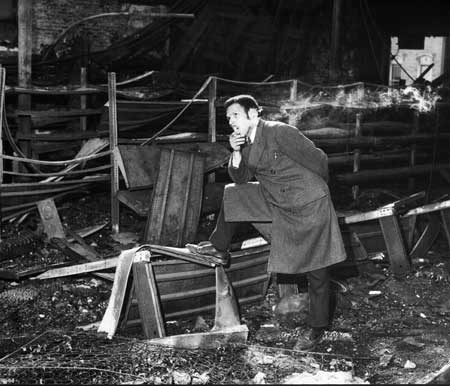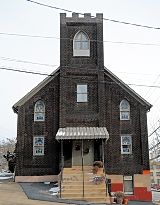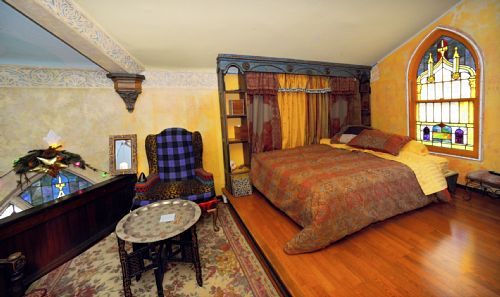
Latest News
-
Carlynton Parents Group Vows to Keep School
Plans to run school board candidates to block Crafton Elementary closureThursday, February 24, 2011By Kim LawrenceCarlynton Parents Group Vows to Keep School
A parents group in the Carlynton School District plans to run a slate of candidates in an effort to reverse the decision to consolidate Crafton and Carnegie elementary schools.
Carlynton school directors voted 5-4 last Thursday to close the two schools and construct a new elementary building for approximately $30 million in the vicinity of Carnegie Elementary. The Honus Wagner athletic field would remain untouched.
Thomas Brown, Patricia Schirripa, Thomas DiPietro, Ronald McCartney and Sandra Hughan supported the proposal, which has been discussed since last year.
Parents opposed to the plan have argued that a better use of funds would be to renovate the elementary buildings.
Crafton resident Megan Schriver said the slate will seek nominations May 17 for five school board seats as advocates of saving neighborhood schools, keeping neighborhoods intact and thriving, and being fiscally responsible with renovations and upkeep of school buildings.
“We don’t have the candidates yet, but they all will be individuals who understand the importance of neighborhood schools,” Mrs. Schriver said, noting that not all of the candidates will be from Crafton.
She is a member of Carlynton Save Our Schools, a group described on its website as parents, residents and business owners promoting fiscal responsibility by keeping and renovating community schools.
SOS has posted green and gold “save our neighborhood schools” yard signs throughout the district, which covers Carnegie, Crafton and Rosslyn Farms.
While there are no schools in Rosslyn Farms, the borough had sent a letter to the district, requesting school officials to consider reasonable and affordable renovations to the elementary schools and consider merging with another district.
The decision to consolidate was among 10 options presented in a feasibility study by L. Robert Kimball & Associates to renovate or expand schools or construct a new building.
The junior-senior high school was built in 1969, Carnegie Elementary was built in 1954 and Crafton Elementary was build in 1913. Each building has had at least one renovation.
At the Feb. 17 meeting, Crafton parents again pleaded their case about keeping their neighborhood school, and several Carnegie parents welcomed the idea of a new school in their neighborhood.
Mr. DiPietro said that because of Crafton council’s resolution and continued public pledge to keep Crafton Elementary School, the board was forced to chose Carnegie as the site for the new elementary school.
He said the district was dismayed by Crafton’s efforts to stop the building. He said sarcastically, “It’s a great message to send to the kids to have council threaten the school board.”
Director Sharon Wilson, the only board member who lives in Crafton, voted via speaker phone against the proposal.
She said she didn’t want to cut programs or maintain an empty building, but she wanted to have an increase in space and she wanted the cost of infrastructure to balance with the cost of education.
Director Betsy Tassaro who also voted no said, “I don’t feel like we’ve done enough.” She said she recognized that the communities want to keep their schools.
Comments from parents were heard for about an hour and a half prior to the vote.
Carnegie council members were also in attendance cheering the board on.
Councilwoman Carol Ann Covi said, “My bottom line is the children. I would love to see both schools renovated. We would welcome a new school in Carnegie.”
Carnegie council President Patrick Catena thanked the school board for its due diligence with the financial analysis.
He said renovating the schools would only be putting a Band-Aid on them and that everything would be more expensive a few years later.
“Carnegie council believes in consolidation,” Mr. Catena said. “It makes the most sense.”
-
Pittsburgh Development Group’s New Chief Has Big Ideas
By Craig Smith
PITTSBURGH TRIBUNE-REVIEWPittsburgh Development Group’s New Chief Has Big Ideas
Saturday, February 19, 2011
Michael Sriprasert had an exciting week.
He got engaged to his girlfriend, Gladys Perez, 32, of Bloomfield, and was named president of Landmarks Community Capital Corp., the financing division of Pittsburgh History & Landmarks Foundation.
“It’s been a heck of a week,” said Sriprasert, 30, of Bloomfield.
Sriprasert, who has been with the foundation for about five years, will retain his title and duties as director of real estate development. Wearing two hats is nothing new.
“I’m used to it. It’s not out of my skill set,” he said. “I like to keep busy.”
A 2005 graduate of the Heinz School of Public Policy and Management at Carnegie Mellon University, he is completing a Master of Business Administration degree at the university’s Tepper School of Business.
At Landmarks Community Capital, he’ll oversee about $8 million in assets. The agency funds four to six large projects a year, something Sriprasert hopes to see increase.
“I want to raise the deal flow … we’re going to be ramping it up,” he said.
He will push for Landmarks to win a Community Development Financial Institutions Fund designation from the U.S. Treasury Department. The application is pending.
The CDFI Fund certifies organizations to provide financing and related services to communities and populations that lack access to credit, capital and financial services. The designation would open the door for more money to flow into the region for preservation and other projects.
“I’m excited. … It will further the mission of Landmarks,” Sriprasert said.
The CDFI designation will “elevate the image of our work with banks and financial institutions and make us eligible for Treasury support,” said Arthur P. Ziegler Jr., president of Pittsburgh History & Landmarks Foundation.
The foundation formed Landmarks Community Capital in 2007 to provide investment capital, development expertise and pre- and post-technical assistance to low- and moderate-income communities during the early stages of development.
A substantial amount of funding for the startup came from Dick Scaife, owner of the Tribune-Review, Ziegler said.
The Sarah Scaife and Allegheny foundations gave more than $500,000, he said.
-
New Book Helps Fans Trace Steps of August Wilson
By Alice T. Carter, PITTSBURGH TRIBUNE-REVIEW
Tuesday, February 22, 2011New Book Helps Fans Trace Steps of August Wilson
A new book published by the Pittsburgh History & Landmarks Foundation offers a guide to playwright August Wilson’s world in fact and fiction.
August Wilson poses for a portrait at Yale University in New Haven, Conn., in this April 7, 2005, file photo. Wilson, whose epic 10-play cycle chronicling the black experience in 20th-century America included such landmark dramas as "Fences" and "Ma Rainey's Black Bottom," died Oct. 2, 2005, of liver cancer. He was 60. AP Photo/ Michelle McLoughlin
Published in softcover and conveniently sized for touring, “August Wilson: Pittsburgh Places in His Life and Plays” (Pittsburgh History & Landmarks, $8.95) guides visitors to sites in the Hill District and the greater Pittsburgh area connected with the playwright’s life and in his plays.
The fourth in a series of guidebooks from Pittsburgh History & Landmarks, it contains essays on the life and work of Wilson and the history of the Hill District, as well as summaries of the 10 plays in Wilson’s Pittsburgh Cycle, many of which were set in the Hill District. Wilson’s niece, Kimberly C. Ellis, and Sala Udin, Wilson’s lifelong friend, contributed introductory essays.
In addition, the book contains maps and descriptions that take visitors on a walking tour past locations that have connections to events in Wilson’s life or to the characters and settings in his plays.

August Wilson lived above this market at 1727 Bedford Avenue, in the Hill District, as seen here in this photo dated July 11, 2007. Published in softcover and conveniently sized for touring, "August Wilson: Pittsburgh Places in His Life and Plays" (Pittsburgh History & Landmarks, $8.95) guides visitors to sites in the Hill District and the greater Pittsburgh area connected with the playwright's life and in his plays. Philip G. Pavely | Tribune-Review
The goal of the book was to give the public a way to connect with those events and locations in Wilson’s life and plays, says Laurence A. Glasco, associate professor of history at the University of Pittsburgh. He co-wrote the book with Christopher Rawson, a member of the University of Pittsburgh English department and senior theater critic at the Pittsburgh Post-Gazette.
“It gives them a chance to actually walk and see and have physical and emotional contact,” Glasco says. “Something emotional happens when you walk in the feet of places where things happened. … It makes people aware of their environment, to be able to connect with that and see how it fits into a larger pattern.”

The Hill District as it appeared in 1951, when Wilson was 6 years old. The view is up Forbes Avenue from Soho. The then-new Terrace Village housing on the hilltop contrasts with older houses below. Carnegie Library of Pittsburgh
The authors began work on the book last summer. But both have been researching and thinking about the material far longer. Glasco teaches a course in the history of Black Pittsburgh at Pitt and Rawson teaches a course on Wilson’s plays.
Even so, there were surprises for the authors as they worked on the book.
“The book’s abundant photos illustrate locations that are still standing, such as the house where Wilson lived until he was 13 as well as West’s Funeral Home and Lutz’s (Meat) Market, locations that were mentioned in his plays,” Glasco says.
“I was surprised how much was there, how many places have a story that is fascinating and important and how much has been lost,” he says. “It shows how Wilson was aware of these places. … They resonated somehow in his mind and heart.”
From 1 to 3 p.m. Saturday, Pittsburgh History & Landmarks will celebrate the book’s publication with a reception and signing at the Ebenezer Baptist Church in the Hill District.
The authors will speak and books will be available for purchase.
-
In a Former Lutheran Church in East Pittsburgh, an Artist Crafts a Home and Studio
Saturday, February 19, 2011By Patricia Lowry, Pittsburgh Post-GazetteHere’s the church.
Up there was the steeple.
Open it up and there’s … no people.
Unless, of course, it’s party time at Dan Riccobon’s house, the former Emanuel Lutheran Church in East Pittsburgh.
He bought the brick building in 1998 from a congregation that by then had dwindled to about 40 elderly members, and he’s spent much of his free time over the past dozen years converting it into his home and studio.
It’s an artful renovation to which Giordano Riccobon has brought his woodworking, ceramic and decorative painting skills and an aesthetic inspired by trips to Venice and his native Trieste.
After World War II, his family’s farm overlooking the Adriatic Sea fell on the Yugoslavian side of the Morgan Line demarcation.
“They just came one day and told my dad he had to go. We could wait 10 years for housing or go to the United States,” where an aunt and uncle awaited them in Pittsburgh.
Mario Riccobon, his pregnant wife Silvia and their four children immigrated in 1951.
“A lot of what I do, whether it’s in the building here or in my artwork, is rooted in the continuous lineage of history,” he said, a commitment reinforced on return visits to Italy’s ancient steps and fountains worn smooth, where he overhears the same conversations from Italians perched on them.
“It’s one never-ending ribbon of time.”
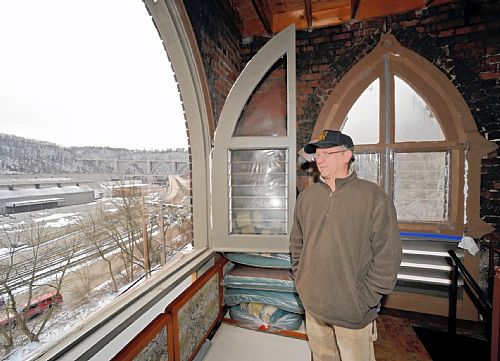
Dan Riccobon converted the bell tower into a small sitting area reached by a spiral stairway that overlooks the former Westinghouse plant. Bob Donaldson / Post-Gazette
In East Pittsburgh, acting as architect, contractor, carpenter and interior designer, Mr. Riccobon has done most of the work himself, from removing the rotting steeple to building the bathroom and kitchen to painting the ceiling of the nave, on his back on a scaffold, with the constellations and the creatures that inspired them.
The result is a sweet, magical, handcrafted space suffused with warmth and a playful spirit of creativity.
“I was giddy when I first moved in,” said Mr. Riccobon, a painter and retired Woodland Hills art teacher.
By then, some of the biggest jobs were behind him, including rewiring the building, vacuuming soot from the attic and insulating it, and installing a shower in the basement.
“It was a long two years traveling back and forth working on the weekends, I can tell you that.”
But what a difference.
For more than 20 years, “I lived in Regent Square in a little tiny third-floor apartment you could hardly stand up in.”
In Westinghouse’s shadowThe congregation that built Emanuel Lutheran Church pretty much lived and died with the Westinghouse plant just across the street.
Westinghouse Electric built its primary plant in East Pittsburgh in the Turtle Creek Valley in 1895, making electric railway motors, generators, switches and other railway equipment. Two years later, German immigrants founded Die Reformations Gemeinde and built a frame church on a narrow, elevated triangle of land on Linden Avenue, then a bustling commercial street.
In 1923, the church was demolished and the triangle leveled to build the new brick church. The congregation sold the building 75 years later, a decade after the Westinghouse plant closed in 1988.
When Mr. Riccobon bought the church, the whole interior was painted white. When some of the paint began to peel, he discovered a decorative border just beneath the ceiling. He made a stencil from the fragment and restored the entire border, along with the church’s ochre-toned walls.
He’s also kept the painted angels-on-canvas that flank the apse, where his 15-foot balsam fir Christmas tree still soars.

The former sanctuary is now a large open living space, with the old altar making home for a huge Christmas tree. Bob Donaldson / Post-Gazette
The nave — the large open area that makes up most of the interior — holds Mr. Riccobon’s living space, with two sitting areas and a dining table near the new kitchen.
Until last June, he used the larger kitchen in the basement but tired of running up and down steps to prepare meals. So he turned the church’s coat closet into his new kitchen, building the Craftsman-style cabinets from scratch using beadboard paneling from Construction Junction. The marble countertops, once part of the wall of a bank, came from CJ, too, as did the Carrara glass back splash.
“It’s a two-way street,” Mr. Riccobon said. “I deliver stuff, too, from here. I’ve taken over doors and sinks I’ve removed.”
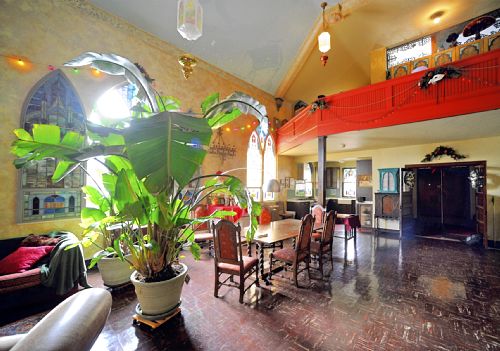
The former sanctuary is now a large open living space, with the kitchen tucked into a corner under the former choir loft. Bob Donaldson / Post-Gazette
At a friend’s urging, he replaced several panes of the stained glass window above the kitchen sink with clear glass. Now he has a view of the Westinghouse Bridge.
Oh gee, what a bathroom!The former choir loft is his bedroom, with a homemade Murphy bed and a wall of IKEA cupboards painted to resemble an old Venetian screen.
But the showstopper is the adjacent tiled bathroom and its ogee-arch shower opening. He made the turquoise tiles that frame it, glazing and firing them along with student work at Woodland Hills High.
The bathroom’s curved wall (and curved interior windows; that was a challenge) was ordained by the circular staircase he installed to get to the bell tower, now a summer sitting area with sweeping views of the valley. Higher still and accessible by ladder is the open deck that held the steeple.
The huge basement houses Mr. Riccobon’s painting studio, where he produces large-scale canvases based on his photographs of Venetian architecture. He uses some of the same techniques as in his decorative painting, creating built-up surfaces with a patina of antiquity.
For a dozen years Mr. Riccobon had a studio in Oakland, where he worked on sets and costumes for the late Don Brockett’s productions. The Jack Lambert head atop the library’s bookshelves is a relic of that era.
He made the big harlequin head mounted on the west wall for a Mardi Gras party he threw in 2000 for the teachers he’d worked with at several Woodland Hills schools. He created the King Kong head and the 11-foot-tall Frankenstein that looms over the library alcove for one of his Halloween parties.
For Mr. Riccobon, the best part of having home and studio in the same building is not the easy commute but having work in progress so close at hand.
There’s an advantage to “being able to look at what you’re working on as you walk by, rather than leaving it and not beginning to think about it until you see it again,” he said. “As an artist, about 80 percent of the work you do is thinking about it, judgmental things, rather than the actual painting.”
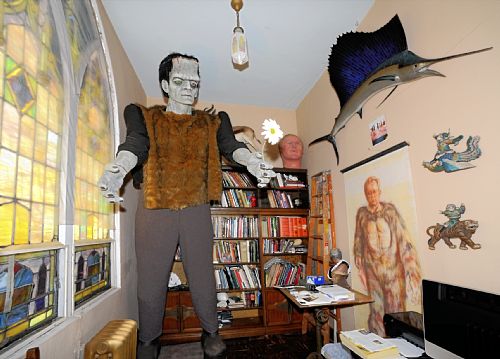
A small room off the former alter is an eclectic mix of his art, including Frankenstein, Jack Lambert's head and a painting of Riccobon in a gorilla suit. Bob Donaldson / Post-Gazette
He has a word of caution for anyone considering buying a church for living space. Before you can bid on the building, he said, you’ll need a mortgage approval, and to get that you’ll need an architect’s renovation drawings and a contractor.
He ended up taking another route, paying with cash socked away during all those years living in the third-floor walk-up. That left him little money for the major renovation he’d been contemplating, but that turned out to be a good thing.
“It allowed me to live here and get a feel for what I needed,” he said. “If I hadn’t, it would have been a disaster. I had thoughts of putting in a second floor.
“What I finally decided I should do is make everything look like it belonged here in the beginning,” he said. “Nothing’s nicer than these giant ceilings.”
-
Carlynton Votes to Consolidate Elementary Schools
Friday, February 18, 2011By Kim LawrenceThe Carlynton school board voted 5-4 Thursday night to close Crafton and Carnegie Elementary Schools and build a new school at the site of the existing Carnegie Elementary School.
The decision came after about two hours of listening to Crafton parents discuss the devastation that would occur if they lost their neighborhood elementary school. Carnegie council members said they would welcome a consolidated school in their neighborhood.
School board President Thomas W. Brown, Vice President Patty Schirripa, Sandra Hughan, Ronald McCartney, and Thomas Di Pietro voted for this consolidation. Board members Nyra Schell, Betsy Tassaro, Sharon Wilson and Raymond Walkowiak dissented. Mr. McCartney made the motion to build a new elementary school at the Carnegie site to accomodate all of the children in the district. Director DiPietro seconded the motion.
The details have yet to emerge regarding where the students will go when their school is torn down. Mr. McCartney said that the Carnegie athletic field would remain intact.
-
Opponents to Closing Pitcairn Elementary School State Case
Thursday, February 17, 2011By Deborah M. Todd, Pittsburgh Post-GazetteUsing a range of emotional and economic arguments, dozens opposed to the proposed closing of Pitcairn Elementary School stated their case Tuesday night during a public hearing hosted by the Gateway School District.
Standing before the school board and other district officials, the majority of speakers testified to the school’s significance to community vitality. Rollo Vecchio, president of Pitcairn council, said a condition of the original merger of the two districts serving Monroeville and Pitcairn in the 1950s was that a school building always remain in Pitcairn.
“It’s part of our community that has served its meaning well and I’m asking you to keep it up … It’s the centerpiece of our community and I hope it can stay that way,” he said.
The school district is considering closing Pitcairn Elementary as part of a realignment plan that could eliminate all elementary buildings in favor of a new K-4 building on the Gateway Campus.
Mr. Vecchio dismissed a finding by consulting firm Education Management Group LLC that the school faces threat of flooding from Dirty Camp Creek, stating that a project redirecting the stream is nearly 90 percent complete.
Many more speakers rejected aspects of the report, including no mention of how much money the district would save through the closure and a lack of plans to close any elementary school other than Pitcairn.
“There has been no positive plan for maintaining Pitcairn Elementary School presented by the school board. Overall, the conclusions of EMG were always prejudiced and slanted, targeting Pitcairn Elementary School time and time again for closure,” said Betsy Stevick, president of the Pitcairn High School Alumni Association.
Some speakers offered alternatives to the plan to consolidate schools. Speaker Fred Mendicina suggested closing University Park Elementary and distributing its students throughout the remaining schools to increase all of the buildings’ enrollment. Speaker Leeann Pruss suggested the district extend elementary schools to fifth grade and merge schools for grades 6-8.
“It would solve the issues of those wanting more students on Gateway Campus, it would give you [Gateway Middle School] located near the parkway and turnpike that could potentially sell for a lot more than Pitcairn Elementary, it would eliminate a transition for all students instead of increasing transitions for Pitcairn students, and it gives you a lot more future benefits than closing one elementary and leaving all others operating under capacity,” she said.
District officials declined comment following the meeting, but some of those who attended said they were encouraged by board members’ actions during the meeting.
“We don’t know, but it looked like they were paying attention,” Ms. Pruss said.
“They’re going to have to go home and digest the information,” Ms. Stevick said.
Either way, Ms. Pruss said, this isn’t the last the board has heard from them.
“They have 90 days, we’re not going to leave them alone, we’re not going to let it drop,” she said.
-
County Urban Farm Effort Expands in Second Year
‘Allegheny Grows’ will donate produce to food pantries, families in needThursday, February 17, 2011By Len Barcousky, Pittsburgh Post-GazetteA new “urban farm” in Bellevue will help North Hills Community Outreach achieve one of its top goals for the more than 1,200 families it serves each year.
The fresh tomatoes, peppers and beans raised there this summer will aid the social service agency in assuring “adequate healthy nourishment for the people who use our food pantries,” executive director Fay Morgan said.
Bellevue’s new garden will be part of the second year “Allegheny Grows” urban-agriculture effort. Bellevue, Wilkinsburg and Penn Hills were selected last week to participate in the expansion of the program.
Their projects were selected from among proposals submitted by a dozen municipalities and their local partners.
The community gardens and urban farms that Allegheny Grows sponsors offer environmental, economic, social and educational benefits, project manager Iris Whitworth said. She works for the county’s economic development office.
Communities and projects were picked based on strong municipal leadership, enthusiasm of local volunteers, suitability of their garden site and community need, Ms. Whitworth said.
The effort has the support of County Executive Dan Onorato. “Allegheny Grows builds on the county’s ongoing initiatives to revitalize older communities and distressed municipalities through sustainable development and strategic investment,” he said in a statement.
This year’s budget for Allegheny Grows is about $75,000. In addition to setting up new projects in the three communities, the funds will be used to cover second-year costs for garden projects begun last year in Millvale and McKees Rocks.
Gardeners in both communities will get seedlings and technical advice. Millvale’s project also will receive rain-collecting barrels, and McKees Rocks will get help in edging its garden beds and making them accessible to people with disabilities.
The money for Allegheny Grows comes from federal community development block grants.
Local partners in each community will work with “Grow Pittsburgh,” which was formed in 2005 to encourage city gardening, and with the Western Pennsylvania Conservancy. The Western Pennsylvania Conservancy is well known for its summer flower gardens. Working with various partners, it plants 140 of those in 20 counties.
The organization also has been long involved in support for vegetable gardening, Judy Wagner said. She is the director of the conservancy’s community gardens and greenspace programs. Its community garden projects were common in the 1980s as the region’s steel industry collapsed, she said. Many families turned to growing food for themselves and their neighbors.
More than a year ago, the conservancy and Grow Pittsburgh teamed up to teach people how to grow food in urban setting.
Conservancy staff will work on design and construction at all three sites while Grow Pittsburgh will take lead in training volunteers.
BellevueBellevue’s project will be on Davis Avenue on a 13,500-square-foot tract owned by North Hills Community Outreach. The land had been donated in 2008 by Terrie Amelio, of McCandless, to the social-service agency. The site will be named the Rosalinda Sirianni Memorial Garden in honor of Mrs. Amelio’s mother, Ms. Morgan said.
Most of the labor for the organic farming effort will be provided by volunteers, who will be supervised by a part-time community outreach employee, Ms. Morgan said. Produce grown there will be donated to food pantries.
Bellevue will supply water for the garden, and two foundations are among those aiding the effort. The Comcast Foundation will provide funds to hire the part-time coordinator, and the Grable Foundation has given money to pay local youth helpers to work with the volunteers.
WilkinsburgWilkinsburg’s urban farm will be part of a 2-acre site on Jeanette Street in the city’s Hamnett Place neighborhood. The land is owned by Pittsburgh History and Landmarks Foundation, which already is involved with several housing renewal projects in the community. Allegheny Grows will be working with a citizens organization called Hamnett Place Community Garden Association to plant and care for the site.
The site will have 16 individual plots and can be expanded to more than 20, garden association president Rachel Courtney said. Another portion of the vacant lot will be converted into a play-and-learning area for neighborhood children.
Local residents are already planning their own plots. “A woman from Jamaica has told us she hopes to grow things that she can’t find in the grocery stores here,” Ms. Courtney said.
“Buildings are not what make communities,” Karamagi Rujumba said. “People make communities.”
That is why his employer, the Pittsburgh History and Landmarks Foundation, is assisting in the Allegheny Grows effort, he said. Mr. Rujumba is coordinator of landmarks foundation programs in Wilkinsburg.
The garden and adjoining children’s “learning space” should teach people practical gardening skills and give them a sense of ownership in their community, he said.
The Hamnett Place project also has received funding from the Heinz Endowment, the Richard Mellon Scaife Foundation, Allegheny County and the state.
Penn HillsPenn Hills will provide water and leaf-mulch compost for an expanded community garden that occupies the site of a former municipal ballfield in the 1100 block of Jefferson Road.
Local Boy Scouts last year helped to clear and prepare the site for gardening as an Eagle Scout project, Ed Zullo, president of Penn Hills Community Development Corp., said.
The site had been divided into a dozen raised garden beds, and plans for this spring call for almost doubling that number to 22 plots.
Gardeners last year raised vegetables both for their families and donated baskets of tomatoes and peppers to two local food pantries, Mr. Zullo said. That effort likely will expand to benefit a third pantry this year.
His agency’s partnership with Allegheny Grows could mark the start of efforts to create additional agricultural sites across Penn Hills, he said.
Community gardens offer multiple benefits, supporters say. They provide fresh, healthy food and they can improve the appearance of blighted land. Their vegetation helps to reduce storm-water run-off, and the flowering plants growing there help support bee colonies and other pollinators.
They also have less obvious advantages. “Neighbors in Millvale really enjoy working together,” the conservancy’s Ms. Wagner said. “You are growing your community as you are growing vegetables.”
Mr. Zullo agreed that gardens can serve as a development tool. “We get neighbors of different generations and different races interacting,” he said. “Old people teach young people, and neighbors compete over who has grown better tomatoes.”
-
Fairview Park Gets Historical Status
By Richard Robbins
TRIBUNE-REVIEW
Wednesday, February 16, 2011Fairview Park Gets Historical Status
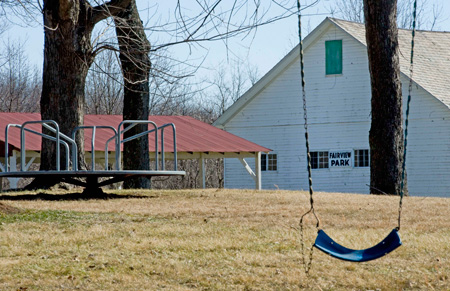
Once home to amusement rides and a swimming pool, Fairview Park today consists of aging swings sets and slides, a basketball court, a ball field and several picnic pavilions. Barry Reeger | Tribune-Review
A Westmoreland County park with roots deep in African-American history has been listed on the National Register of Historic Places and named a historic landmark by the Pennsylvania Historical and Museum Commission.
Fairview Park in Salem Township, near Delmont, was created in 1945 in response to mostly or exclusively whites-only amusement parks throughout Western Pennsylvania.
The segregationist era began to crumble in the 1960s, and the amusement rides and other attractions at the park eventually were dismantled. Today, Fairview Park consists of aging swings sets and slides, a basketball court, a ball field and several picnic pavilions.
Ernest Jackson, president of the Fairview Park Association, said the state and federal designations were intended foremost to “honor the memory” of the men and women who founded the park and of the wonderful times the park made possible.
Originally organized by a coalition of black churches in Pittsburgh, Fairview Park hosted large gatherings until sometime in the 1970s, Jackson said.
The founders had “foresight and vision,” said Jackson, of the South Hills.
“Fairview Park enabled a lot of people, including a lot of young people, to get out of the inner city and spend time in the country,” he said.
He said photographs from the late 1970s show row after row of buses jammed with fun-seekers pulling up to the park entrance.
At the height of its popularity, the park featured a roller-coaster, merry-go-round, skating rink and swimming pool.
At 52 acres, today’s park is nearly half the size it once was. It is maintained by a small group of volunteers, Jackson said.
Each summer, the Fairview Park Association holds an annual Old-Fashioned Picnic at the park with a petting zoo and other amusements. The event is open to all, Jackson said.
The de facto segregation of blacks was a way of life in the northern United States during most of the 20th century. Blacks in Western Pennsylvania were routinely barred from public facilities such as movie theaters and swimming pools. All of this was in contrast to the Jim Crow segregation — mandated by state and local laws — practiced in the South.
Carol Lee, the state’s national register and survey coordinator, said Fairview Park is the only black amusement park in the state. “At least it’s the only one we know of,” she said.
That makes Fairview Park significant in the commission’s eyes, Lee said.
The state and federal actions recognizing the park were wrapped up in December, Lee said. The review process took about 18 months.
“Basically, it’s a matter of having bragging rights,” Lee said of the designation as a state and federal historical treasure.
There are no bars to private development of the property, she said. At one time, the park association was looking forward to the construction of a multimillion-dollar, assisted-care living facility on the property.
Jackson indicated that no project is planned, though he holds out hope the park’s enhanced status will stimulate interest in the park’s history and possibly development.


